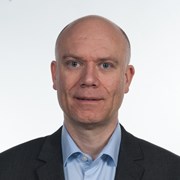These projects concerned preliminary model tests and studies of new concepts for the installation of foundations for fixed offshore structures. Results from the DeepWind project were presented at the OMAE 2012 Conference in Rio de Janeiro.
We have continued the development and verification of the functionality of our simulation tools for fixed and floating offshore wind turbines, and the results have included improved models of turbulent wind-fields and turbine blade loads. The results of a verification study of new wind-turbine functionality in RIFLEX were presented at the ISOPE conference in Rhodes. SINTEF is collaborating actively with other partners of the Norwegian Research Centre for Offshore Wind Technology (NOWITECH), a national centre for research on environmentally friendly energy (FME).
New proposals for wind-turbine technology and wave-power systems have been evaluated on behalf of Innovation Norway and other project sponsors, and improvements are suggested. In collaboration with SINTEF Building Research (the Harbour Laboratory) and the Indian Institute of Technology in Madras, we launched the OWCBW project, which is investigating technology of wave-power plants based on oscillating water columns integrated into harbour structures and moles.
The completion of the SIMA interface for user-friendly visual modelling and analysis of integrated systems was another important achievement. This interface supports dynamic analysis of structural response for both fixed and floating systems exposed to loads from waves and wind. Our R & D efforts on fixed structures have focused on simple models of foundations and improved wave kinematics, including interaction models between structures and seabed, in addition to modelling seabed erosion and scour.

